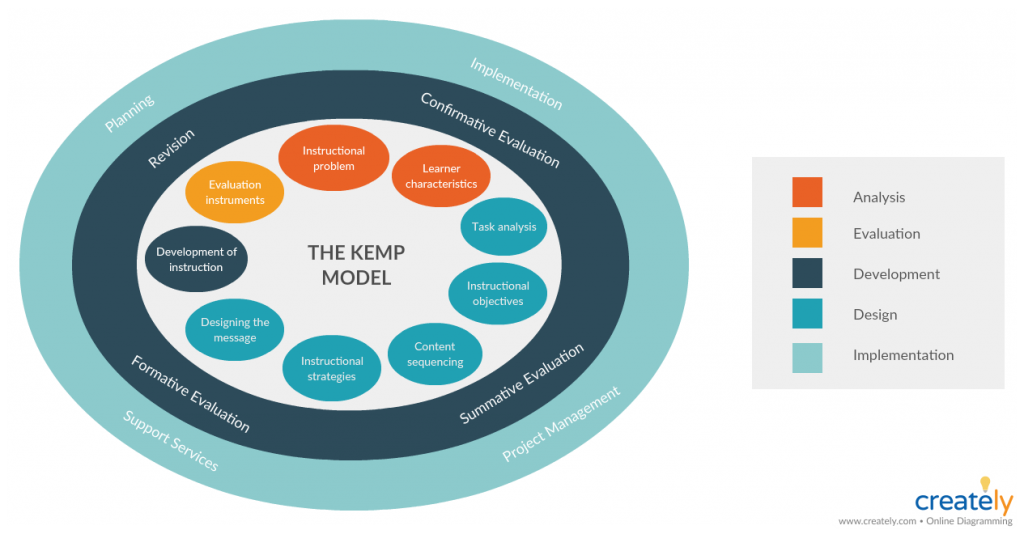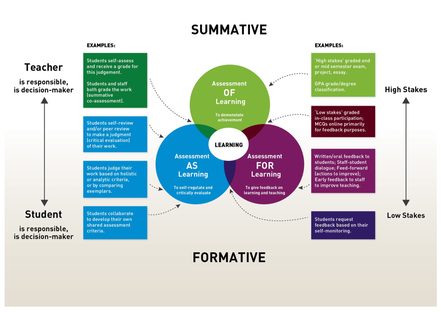Join the Club:
A Project-Based Learning Initiative
Overview
SubjectThe goal of the ‘Join the Club’ initiative is to make learning meaningful for our 4-H Club members through project-based learning. By implementing PBL in the 4-H program, we can support our students academically and socially as we increase engagement and enthusiasm. The professional learning to support this program is a 5-week course that guides the learner through modules that help them identify the characteristics of an authentic learning environment and discover ways to increase student success by including the elements of Choice, Ownership, and Voice in that environment. From there, the principles of COVA will be used to transform the 4-H club activities into more meaningful PBL experiences. The course is outcome-based in that the ultimate measure of success is that the participants feel empowered to use what they learned to create project-based learning experiences for present and future students.
|
AudienceAlthough the Innovation Plan is geared toward just the 4-H Club leaders at this time, the professional learning will be offered to all staff in the hopes that they too will see the benefits of COVA+CSLE and PBL.
Guiding DocumentsAccreditationsMy district has an exchange day program that allows teachers to choose professional development that will serve them best. This course will count for 12 hours of exchange time.
|
Instructional Design Model
|
I will use the Kemp Model of instructional design in the building and implementation of this course. I chose this model because of its similarity to the engineering design process that I teach students in the STEAM lab. Making room for the intentional evaluation and revision of the course is what sets this model apart from others.
|
Assessment AS LearningThe learners in this course will continually evaluate their learning through collaborative discussions, reflections, and feedforward from their peers. It is their responsibility to determine how the new information they acquire fits into, or changes, their current ideas about learning environments and student engagement. As learners move through the course, they will have ample opportunities to share ideas with each other, have conversations about their learning, and apply their new knowledge to the real work of teaching in their classrooms.
|
Implementation |
Building the "Join the Club" course was a labor of love. I feel strongly about providing students with authentic learning experiences and have waited a long time to have the opportunity to create a professional learning course that may encourage others to feel the same way. My plan for the course is to make it 5 months long, one month for each module, starting in June. By the time school starts, the participants will be well on their way to planning project-based units for their students and will have earned all of their exchange hours as well! Since my campus already uses Google Classroom, I chose to use it for this course. Other LMS options such as Canvas may be easier to navigate and have more bells and whistles, but as the Technology Integrationist I want my adult learners to experience Google Classroom from the student point of view so they will feel more comfortable using it with their own classes. I have sent invitations to several of my colleagues to join the course so that they can evaluate the modules and provide feedback that I will use to make improvements.
Side note: my neighbor was busy blowing all of her leaves into my yard while I was making this video. Please disregard what sounds to be a Harley in the background. :)
Side note: my neighbor was busy blowing all of her leaves into my yard while I was making this video. Please disregard what sounds to be a Harley in the background. :)
Usability
Since the “Join the Club” initiative is targeted toward the 4-H Clubs on my campus, my first thought was to ask the existing club leaders to help me with the usability testing for the blended learning course. I also included some of the campus leadership to keep them in the loop as far as the Innovation Plan is progressing. There are a few classroom teachers on my campus who are in Masters programs of their own that I thought might benefit from participating in this type of testing as well. I’m glad I included these different groups because I was able to see how the course was interpreted differently depending on the user’s perspective. I sent this request to 10 people total.
My district uses Google Workspace, so I chose Google Classroom as my learning platform. As a technology integrationist, I like to model what I want to see my teachers using in their classrooms. My testers were able to navigate it well, but only because I put in some special instructions to use the ‘Classwork’ tab rather than the ‘Stream’. I think I would prefer to use Canvas for my next course, as it’s structure and ease of navigation outweigh the benefit of using a platform that my teachers might use with their own students.
My feedback results indicate that the course was engaging and easy to understand with meaningful and relevant content and activities. They really liked the “Start Here” Slide Deck and found it very informative. One suggestion was to add an ‘about me’ slide, which I have done.
As far as the learning modules, several testers asked for clarity on the time expectations. To address this, I added a timeline on Slide 4 “Course Information” . If I were to actually launch this course, I would add due dates to the assignments for added guidance. Collaboration restraints were also mentioned as a limitation of Google Classroom, so I have added more information about how to use the class comments to communicate/ask questions about each assignment.
Follow-up interviews with my testers confirmed that my outcomes, activities, and assessment are adequately aligned. I specifically asked them about components that seemed incomplete or out of place, and was glad to hear that everything flowed well from each module’s introduction assignment to the concluding activity. One tester even asked if she could really take the course because it looked so fun and interesting!
The usability testing process was more enlightening than I expected it to be. I was able to gather useful feedback and make significant improvements to my course. With the club program on my campus growing and becoming integrated into the school day, I expect my administration to completely support the implementation of this course next summer so that more teachers will be prepared to “Join the Club!”
My district uses Google Workspace, so I chose Google Classroom as my learning platform. As a technology integrationist, I like to model what I want to see my teachers using in their classrooms. My testers were able to navigate it well, but only because I put in some special instructions to use the ‘Classwork’ tab rather than the ‘Stream’. I think I would prefer to use Canvas for my next course, as it’s structure and ease of navigation outweigh the benefit of using a platform that my teachers might use with their own students.
My feedback results indicate that the course was engaging and easy to understand with meaningful and relevant content and activities. They really liked the “Start Here” Slide Deck and found it very informative. One suggestion was to add an ‘about me’ slide, which I have done.
As far as the learning modules, several testers asked for clarity on the time expectations. To address this, I added a timeline on Slide 4 “Course Information” . If I were to actually launch this course, I would add due dates to the assignments for added guidance. Collaboration restraints were also mentioned as a limitation of Google Classroom, so I have added more information about how to use the class comments to communicate/ask questions about each assignment.
Follow-up interviews with my testers confirmed that my outcomes, activities, and assessment are adequately aligned. I specifically asked them about components that seemed incomplete or out of place, and was glad to hear that everything flowed well from each module’s introduction assignment to the concluding activity. One tester even asked if she could really take the course because it looked so fun and interesting!
The usability testing process was more enlightening than I expected it to be. I was able to gather useful feedback and make significant improvements to my course. With the club program on my campus growing and becoming integrated into the school day, I expect my administration to completely support the implementation of this course next summer so that more teachers will be prepared to “Join the Club!”
References:
C. (2018, June 19). Outcome-based Education vs Competency-based Education [Video]. YouTube. https://www.youtube.com/watch?v=ctEqxCr7ZUg&feature=youtu.be
Fink, L. D. (2003). A self-directed guide to designing courses for significant learning. Jossey-Bass.
Harapnuik, D. (2020, December 24). Assessment Of/For/As Learning. It’s About Learning. https://www.harapnuik.org/?page_id=8900
Krug, S. (2020, May 6). Usability Test Demo by Steve Krug [Video]. YouTube. https://www.youtube.com/watch?v=1UCDUOB_aS8&feature=youtu.be
National Standards for Quality Online Learning. (2019, September 30). Quality Online Courses. https://www.nsqol.org/the-standards/quality-online-courses/
→ V. A. P. B. A. A. (2021, September 23). Top 7 Instructional Design Models to Create Effective Learning Material. Creately Blog. https://creately.com/blog/diagrams/instructional-design-models-process/
C. (2018, June 19). Outcome-based Education vs Competency-based Education [Video]. YouTube. https://www.youtube.com/watch?v=ctEqxCr7ZUg&feature=youtu.be
Fink, L. D. (2003). A self-directed guide to designing courses for significant learning. Jossey-Bass.
Harapnuik, D. (2020, December 24). Assessment Of/For/As Learning. It’s About Learning. https://www.harapnuik.org/?page_id=8900
Krug, S. (2020, May 6). Usability Test Demo by Steve Krug [Video]. YouTube. https://www.youtube.com/watch?v=1UCDUOB_aS8&feature=youtu.be
National Standards for Quality Online Learning. (2019, September 30). Quality Online Courses. https://www.nsqol.org/the-standards/quality-online-courses/
→ V. A. P. B. A. A. (2021, September 23). Top 7 Instructional Design Models to Create Effective Learning Material. Creately Blog. https://creately.com/blog/diagrams/instructional-design-models-process/


